Anthropology Building
](images/anth-exterior-close.jpg)
East entrance of the Anthropology building, 1937. Source
Where is the heart of the University of New Mexico? Some might say the stylistically striking Zimmerman Library or the ever-bustling Student Union Building—not a tucked-away science building on the edge of campus. But if the university has a historical heart, it lies in the Anthropology building. Shielded by massive pines on the western side of campus, this squat complex contains a lecture hall, labs, offices, and the Maxwell Museum of Anthropology. Though it has a low profile today, it was once the center of campus life as the original Student Union Building.
Construction
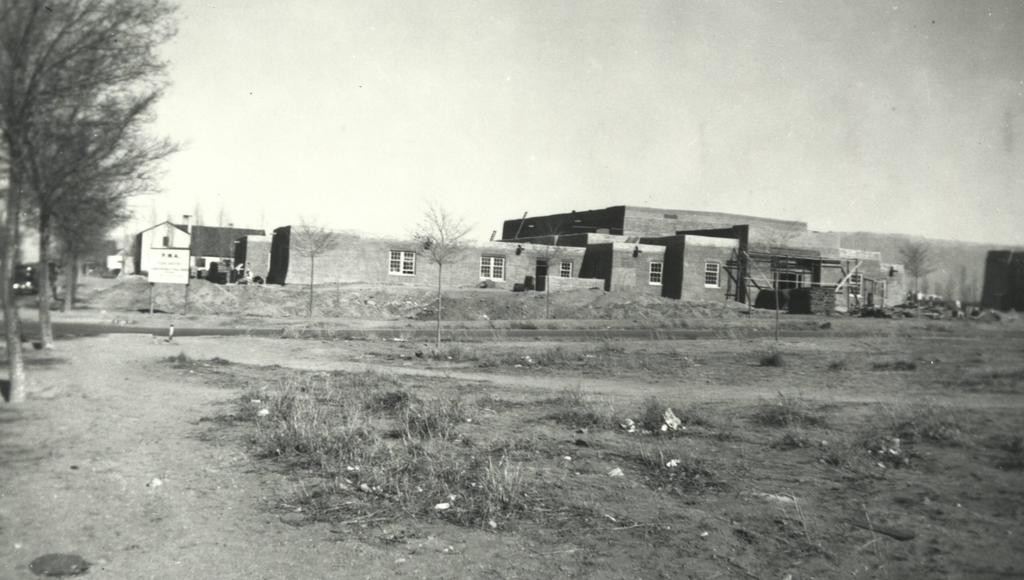
Looking west on the construction of the original Student Union Building, 1936. Source: Center for Southwest Research
The 1930s marked one of several bursts of construction for the university thanks to increased enrollment and funds provided by the Works Progress Administration. The needs of the student body called for the construction of a Student Union, and the university tapped John Gaw Meem to design the building. One of the four original buildings designed by Meem (the others being Zimmerman Library, Scholes Hall, and Bandelier Hall), the Anthropology building remains an example of the Pueblo Revival style the university is known for. Construction on the Student Union began in 1936. In 1937, an open house followed the dedication of the building, and students broke in their new ballroom with a dance.1
](images/anth-exterior.jpg)
Even after completion, the SUB stood amongst barren terrain. Source
In the 1950s, rising enrollment strained the resources of the diminutive Student Union. Construction of a newer, larger building began in 1959, which would become the Student Union Building we know today, and the ‘old SUB’ was refitted for the purposes of the Anthropology Department. The transition required a number of interior renovations, including the addition of the Anthropology Annex (faculty offices and labs) and space for the Maxwell Museum of Anthropology. The Anthropology Department moved in to its current home from the Administrative Building (now Scholes Hall) in 1960.2
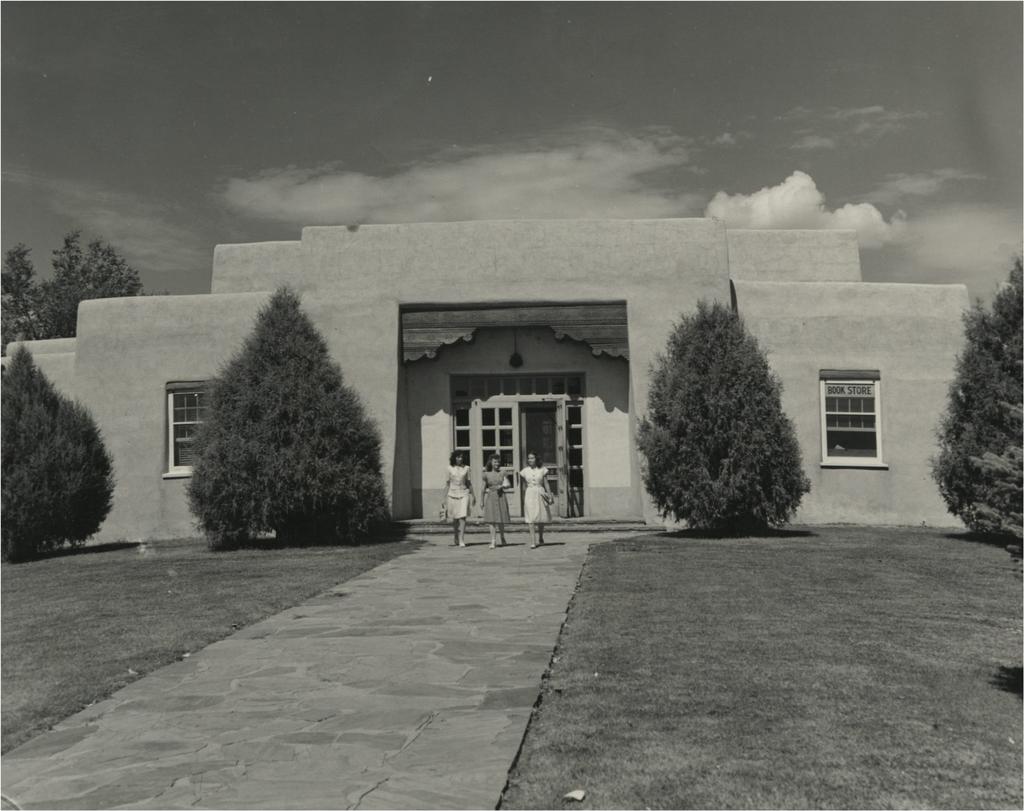
Three students leave the Student Union Building. A sign in the right window advertises the campus bookstore. Soon the campus would outgrow this building, and both the SUB and the bookstore would move. Source: Center for Southwest Research
Renovations
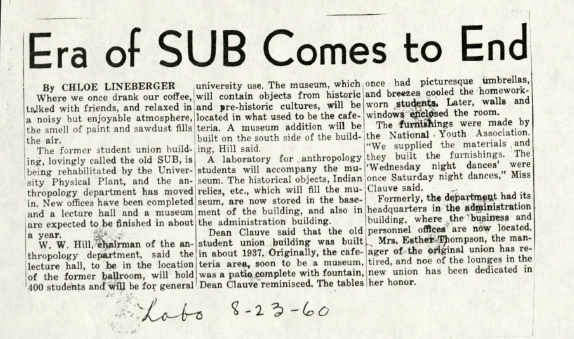
Daily Lobo article from August of 1960 detailing the shift from one Student Union to another, including renovations to the old SUB to better accomodate the Anthropology Department. Source: Center for Southwest Research
Of all the changes the Anthropology building has endured over its lifetime, some of the most significant came in the 1970s. A decade of construction, renovation, and frustration kicked off in in 1970 with renovation of the Anthropology Annex (thanks to funds from the National Science Foundation) to create more space for departmental research and the Maxwell Museum. By 1979, more renovations were already being discussed as a part of a university-wide seating crisis.3
The university experienced seating issues as it struggled to match classes to appropriately-sized classrooms, forcing the administration to re-evaluate the sizes of its lecture halls. When the Student Union moved out and the Anthropology Department moved in, the old ballroom of the building was converted into a massive lecture hall. Correspondence between university officials throughout the 1970s reveals frustrations with the acoustics of the space and the excess of seats compared the number of students using the room. Most people involved in the discussion agreed that the lecture hall needed a change. Many letters between instructors, administrators, and architects reveal that the process of actually solving these issues was a long and slow one. Renovations to the Anthropology lecture hall finally reached completion in 1982 and included splitting the lecture hall into multiple rooms. 4
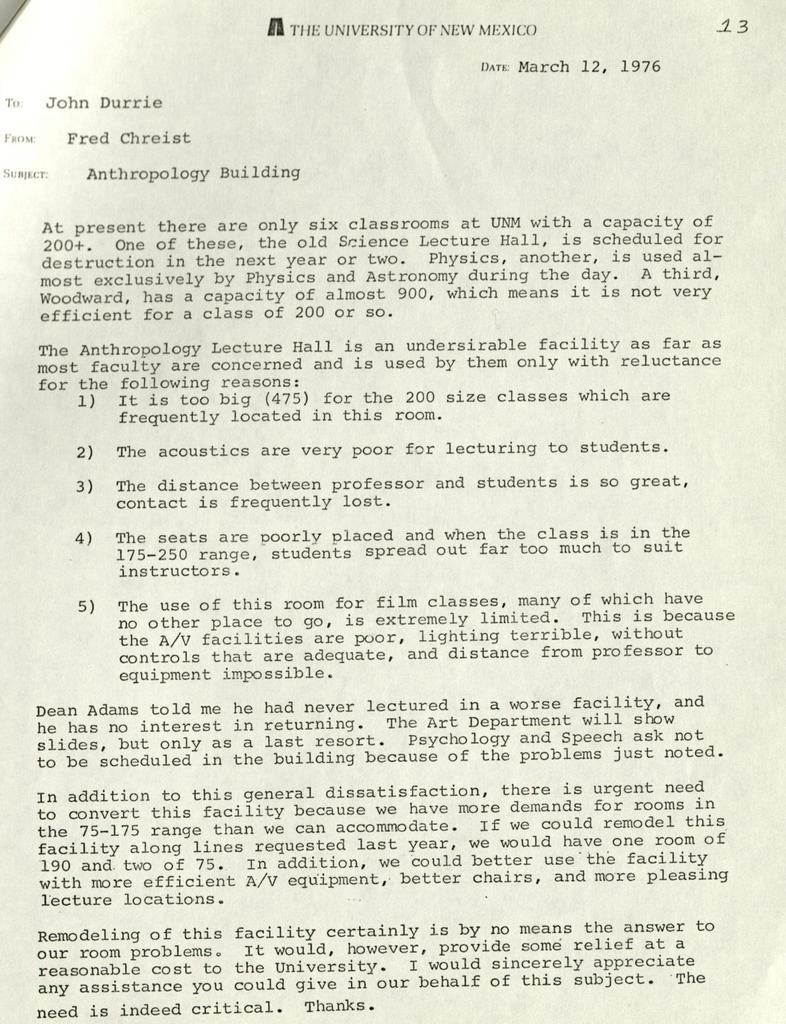
In an evocative letter to university secretary John Durrie, Dr. Fred Chreist (Speech and Pathology) outlines faculty complaints about the Anthropology lecture hall, and alludes to greater seating issues at the university. Source: Center for Southwest Research
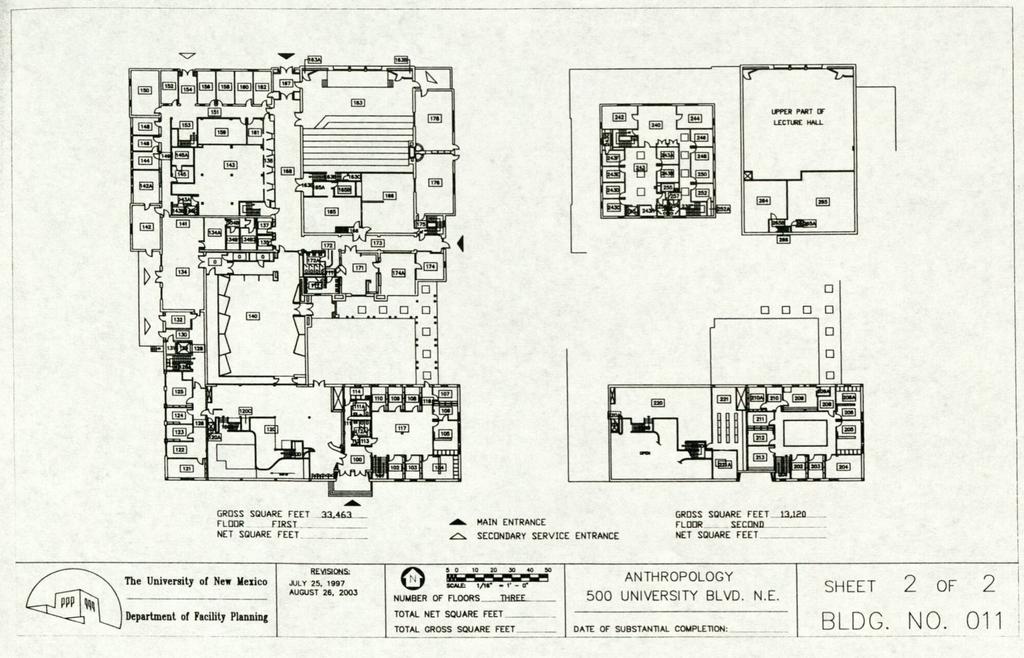
Contemporary layout of Anthropology building. Source: Center for Southwest Research
Anthropology, Today
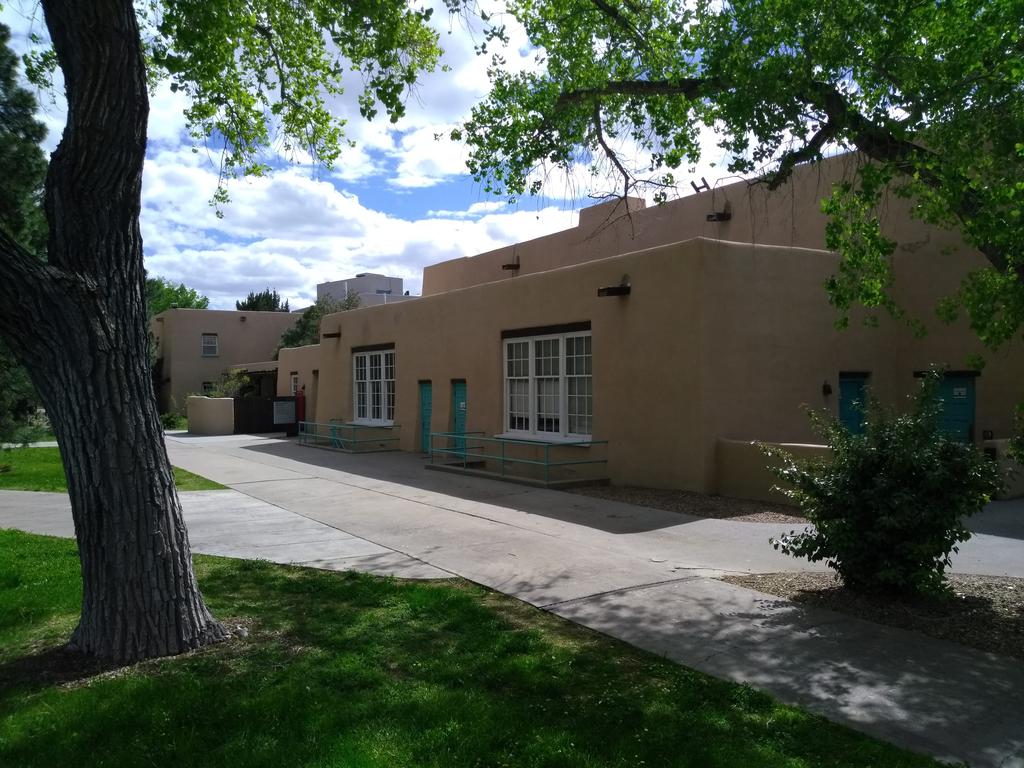
Unlike its early years as the Student Union Building, the east entrance of the Anthropology building is now obscured by trees. Photo by Maxine Porter, 2019.
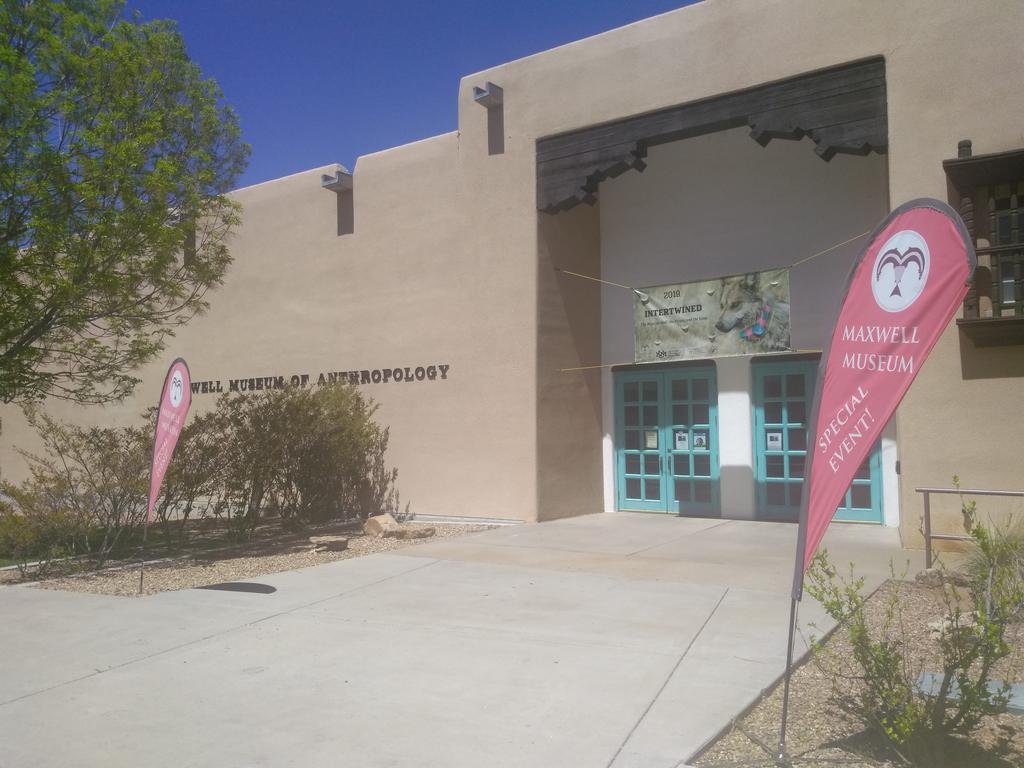
Entrance to the Maxwell Museum of Anthropology, south side of the Anthropology building. Photo by Maxine Porter, 2019.
Once the bustling heart of campus life, today the Anthropology building is easy to overlook. Its distant location means most students don’t pass by the building often, much less step inside, and the imposing trees that shade the main entrance even make it difficult to photograph. It is easy to forget that for previous generations, the core of the UNM experience lie in this little rectangle of a building.
When the Student Union moved east, the whole campus shifted with it, but fragments of the Anthropology building’s past still remain. The main corridor maintains a persistent echo, an indication that the high ceilings were built to accommodate the noise of a crowd. Across the many renovations, the building remains consistent with John Gaw Meem’s original vision, and it stands out as one of the most valuable historical buildings of the University of New Mexico. In these ways, the Anthropology building still is the heart of the university: the steadily-beating reminder of the university’s past, even as it moves into the future.
Bibliography
-
Hooker, Van Dorn, Melissa Howard, and V. B Price. Only in New Mexico: An Architectural History of the University of New Mexico: The First Century, 1889-1989. Albuquerque, NM: University of New Mexico Press, 2000.
-
University of New Mexico. Dept. of Facility Planning Records, 1889-, Collection UNMA 028, Box 1-2. Center for Southwest Research, University Libraries, University of New Mexico.
-
Hooker, Van Dorn, Melissa Howard, and V. B Price. Only in New Mexico: An Architectural History of the University of New Mexico: The First Century, 1889-1989. Albuquerque, NM: University of New Mexico Press, 2000, p. 77. ↩
-
University of New Mexico. Dept. of Facility Planning Records, 1889-, Collection UNMA 028, Box 1. Center for Southwest Research, University Libraries, University of New Mexico. ↩
-
University of New Mexico. Dept. of Facility Planning Records, 1889-, Collection UNMA 028, Box 1. Center for Southwest Research, University Libraries, University of New Mexico. ↩
-
University of New Mexico. Dept. of Facility Planning Records, 1889-, Collection UNMA 028, Box 1-2. Center for Southwest Research, University Libraries, University of New Mexico. ↩
